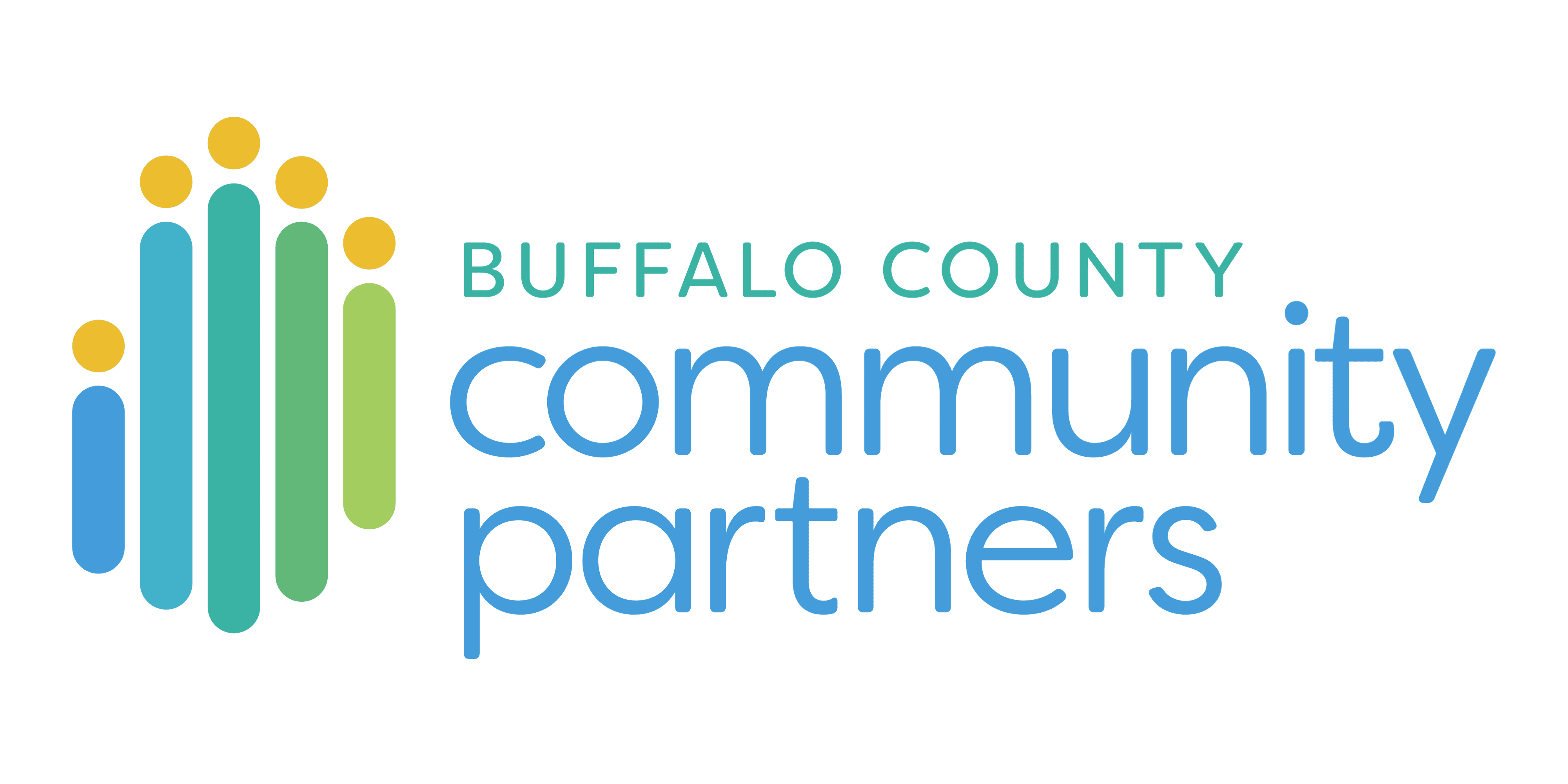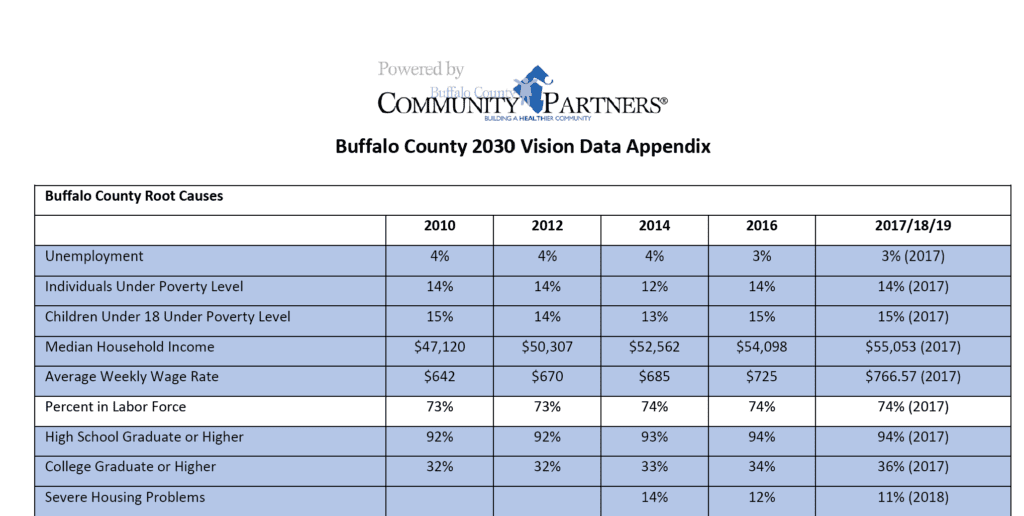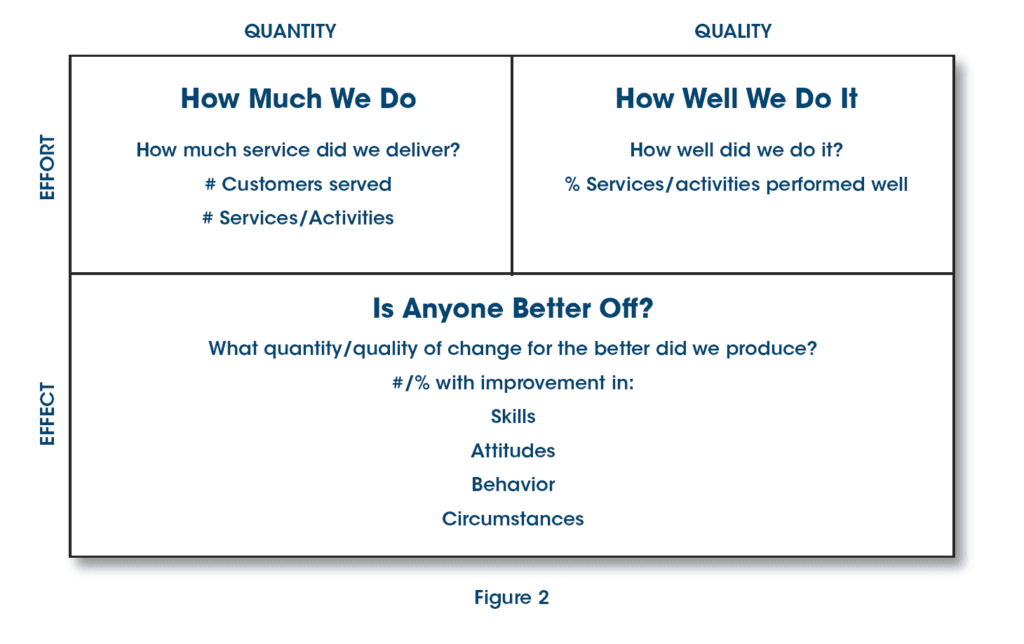Where are we going?
The Buffalo County 2030 Vision is a plan to build a healthier Buffalo County. These priority health goals were established by our board of directors after reviewing local community data:
By 2030,
Our communities’ resources will be easy to understand and accessible for all.
Our communities’ residents will have access to basic services.
Our communities’ families will thrive when partners work together to coordinate services.
Our communities’ will value all people and their voices will inform our work.
“We are all looking for that magic effect, but we recognize that life isn’t like that – many events interact to influence and reinforce…a community has more faith in a structure built together.“
-Nadia Saadi. Buffalo County Community Partners Board Chair
Data Indicators
These data points where used to inform the key findings.
Wellness (Physical/Behavioral
- Decrease Suicides
- Decrease Depression/Anxiety
- Increase adults and peers supports
- Decrease Substance Use/Abuse
- Increase Physical Activity (lower BMI)
- Increase Healthy Eating
- Decrease Rates of Cancer, Diabetes, etc
Youth Promotive Factors
- Increase protective factors that decrease youth risk (or perception of risk)
- Fights / Bullied at School
- Social Media Influence
- Healthy relationships
- Healthy balance of social media engagement
- Homelessness, Trauma, Disturbances
- Early Childhood Development
Access
- To mental health care
- To primary care
- To health insurance
- To affordable housing
- To health food
- Based on income, education, race, culture, language, age, technology, location, immigration status, incarceration
Basic
- Decrease Unemployment
- Increase graduation levels
- Grow labor force
- Reduce # of families living in poverty
- Household income/weekly wages
- Inclusion / Inclusive Community
Buffalo County Key Findings
A list of ‘key findings’ has been drafted after listening sessions with 50+ community partners who shared their vision or hope for their community. These findings have been reinforced by local data and compiled into vision statements.
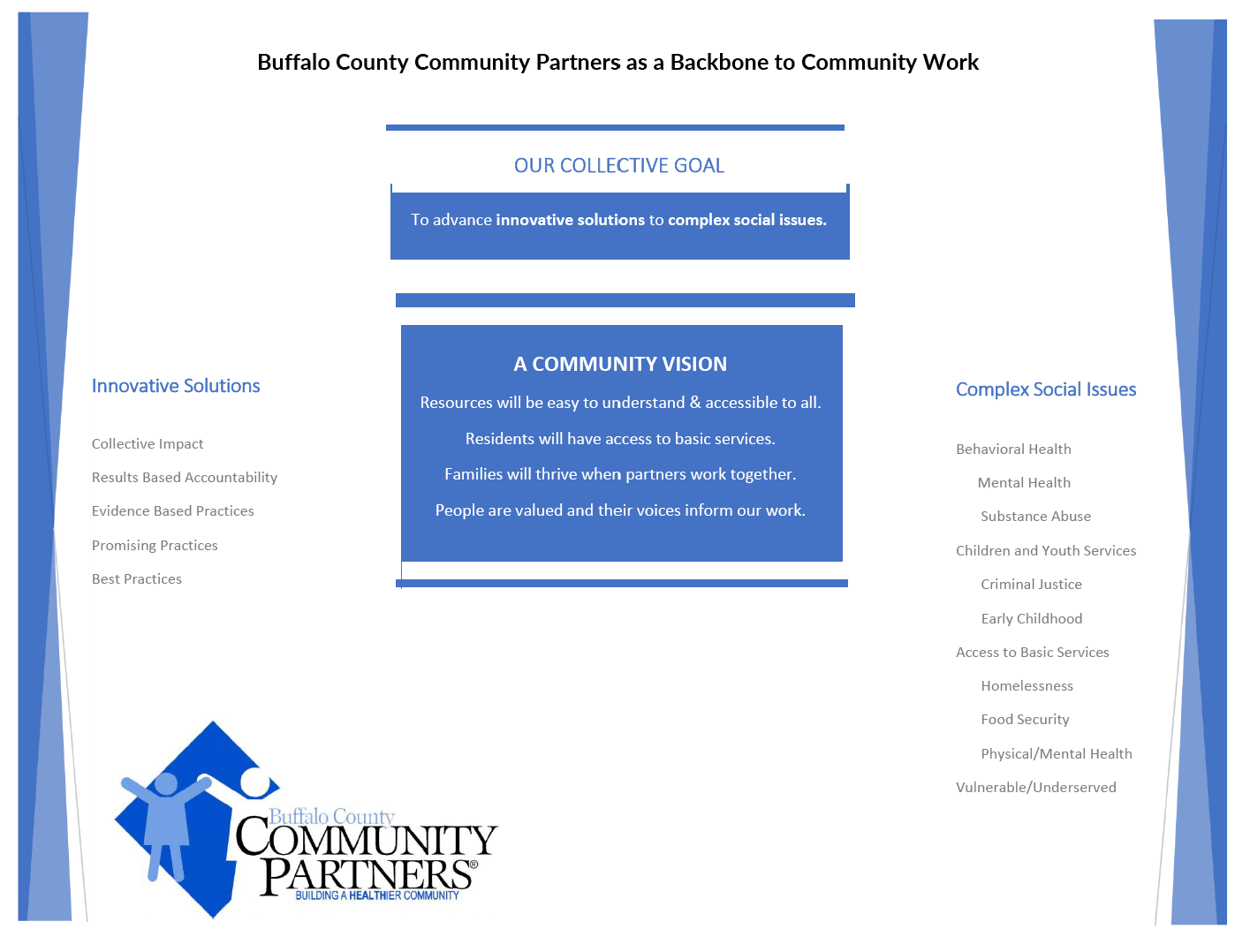
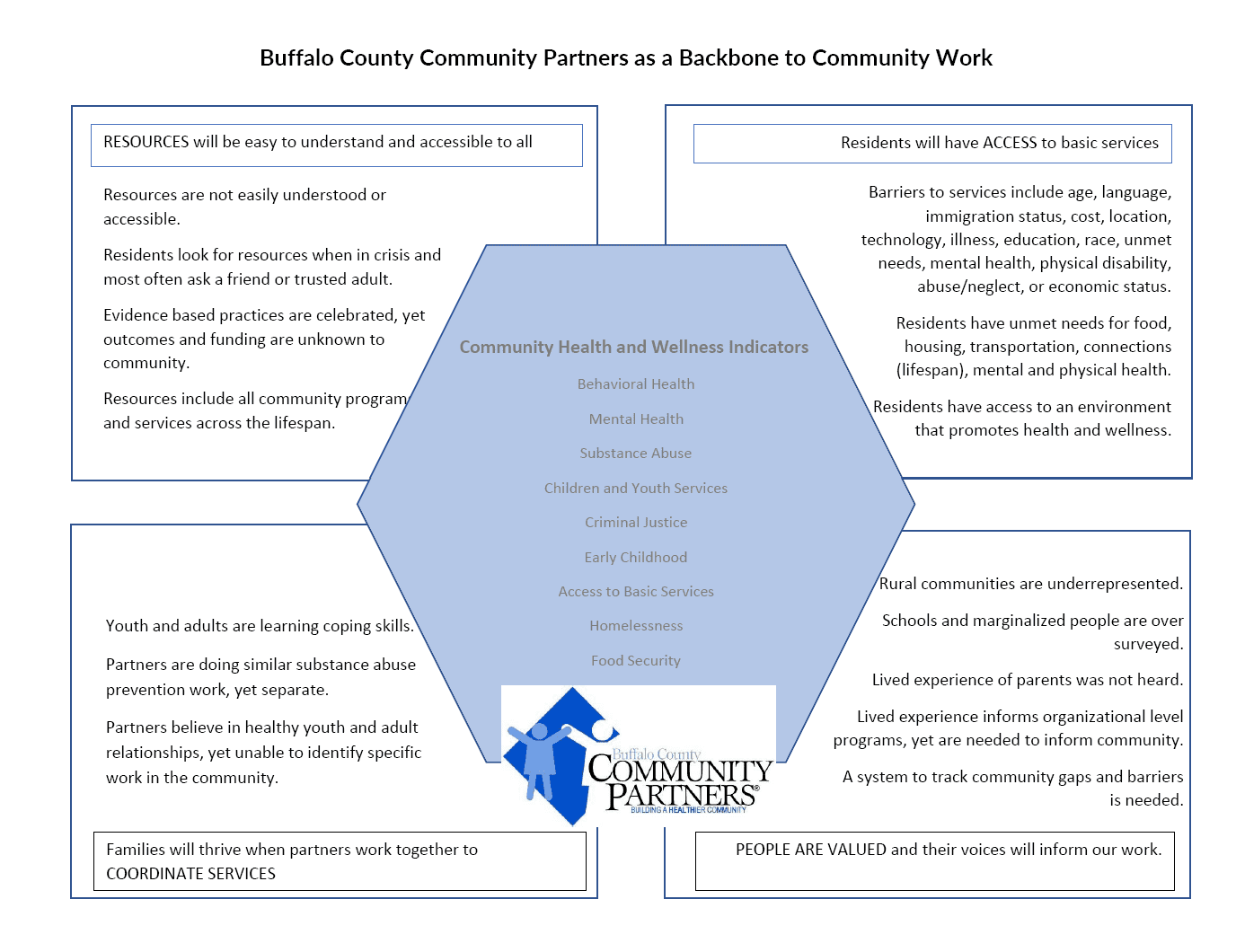
Partners
Over 60 community partners across multiple community sectors have shared their hopes for a thriving community.
Board Members
Community Partners Board Members: Nadia Saadi, Jason Mundorf, Janelle Grabowski, Kathy Gifford, Ken Shaffer, Mike Schnieders, Tammy Jackson, Amanda Shoemaker, Deb Schroeder, Judy Schultz, Ron Dobesh, Nikki Gausman, Bob Bednar, Travis Kirchner, Megan Loomis, Lauren Brandt, Andrea Rabe, Cindy Powell, Diane Duffin, Kellie John, Mike Tye, Amanda Applegate
Community Leaders & Partners
Travis Gregg, Kearney Regional Medical Center; Kent Barney, CHI Health Advisory Board; Ben Rehtus, CHI Health Planning; Carol Renner, Retired; Carol Schwarz, Retired; Julie Calahan, UNK; Sarah Stanislav, CHI Health Community Benefit; Judi Sickler, Kearney Area Community Foundation; Lynette Mitchell, Elm Creek Community; Jo Juhl, Amherst; Deb VanMeter, Gibbon/Shelton
Casandra Diaz, UNK; Michelle Warren, UNK; Becky Kranou; Help Care Clinic; Dulce Valdez, Kearney Public Schools; Shelly Witt, Nebr. Health and Human Services; Elizabeth Roetman/Angela Smith, Kearney Works; Nikki Erickson, United Way of the Kearney Area; Kerry Olivia, Community Action Partnership;
Doug Kramer, Buffalo County Diversion/County Attorney’s Office, Chief Bryan Waugh, City of Kearney Police Dept; Nathan Dennis, Resource Officer, Kearney Police Dept; Sheriff Neil Miller, Buffalo County; Brad Kjar, Ravenna School; Bret Schroeder, Elm Creek Schools; Matt Gordon, Amherst Schools; Jessie Kaskie, Kearney Catholic School; Kevin Finley, Sumner Eddyville Miller School; Nathan Lightle, Pleasanton School; Ken Edwards, Kearney Public Schools; Vern Fisher, Gibbon School; Shannon Gannon, Shelton School; Tiffany Gressley, Region 3
Haley Jelinek, Two Rivers Public Health Dept; Lisa Lieth, Salvation Army; Cheri Clark, Jubilee Center; Carol Schwarz, Buffalo County Extension; Candy Benje, Little Gardens; Braydon Canal, Canal Soaps/Farmer’s Market;
Jesica Vickers, Live Well Counseling; Jason Sharp, Rooted; Caleb Davis, Region 3; Jamie Legates, Families Care; Sara Hock, South Central Counseling Center; Todd Schirmer, McKenna’s Rae of Hope; Jason Owen, Hanny Arram Center; Lacey Witt, Richard Young Hospital;
Where have we been?
Community Partners has a rich history of facilitating conversations in the community to bring partners together collaborating toward creating a healthier community. A few of our favorite collaborations:
|
Advocating for smoke free Nebraska Launching the HelpCare Clinic Employing community health workers Developing a Community Response system that addressed food, housing and other basic community needs |
|

